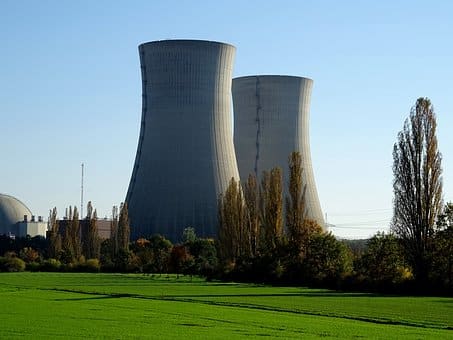U.S. Energy Department Announces $46 Million for Fusion Energy Pilot Project

The U.S. Energy Department on June 1 announced $46 million in grants to eight companies across seven states to advance designs, as well as research and development for fusion power plants. This investment represents a major stride towards the Biden administration’s commitment to establish a pilot-scale demonstration of fusion energy within the next decade which aims to solidify U.S. leadership in fusion commercialization and support the country’s transition to a net-zero economy by 2050. The program also emphasizes support for the Justice40 Initiative to ensure equitable benefits for disadvantaged communities from climate and energy investments.
The Milestone-Based Fusion Development Program grants the eight awardees a timeline of 5-10 years to address scientific challenges and develop fusion pilot plant designs. Awardees including Commonwealth Fusion Systems, Focused Energy Inc., Princeton Stellarators Inc., Realta Fusion Inc., Tokamak Energy Inc., Type One Energy Group, Xcimer Energy Inc., and Zap Energy Inc. were selected through a rigorous merit-review process, which evaluated scientific, technical, commercialization, and business viabilities. The funding is for the first 18 months, with funds coming from fiscal years 2022 and 2023.
The Nuclear Regulatory Commission has directed its staff to create a regulatory framework for fusion energy systems, building on the existing process for licensing the use of by-product materials. In January, the staff suggested three options for the regulation of fusion energy systems: a utilization facility approach, a by-product material approach, and a hybrid approach, which would introduce decision criteria under either of the first two approaches based on an assessment of potential hazards. The action is intended to provide regulatory certainty for the technology given the growth in pilot-scale commercial fusion designs. Under the limited-scope rulemaking approved under Option 2, the staff should consider the existence of fusion systems that have already been licensed and are being regulated by the Agreement States, as well as those that may be licensed prior to the completion of the rulemaking. The move follows commission staff’s determination that fusion systems fall outside of the requirements to be regulated as nuclear reactors. Fusion systems would generate electricity from the energy released when hydrogen atoms are combined to form helium. Current nuclear reactors use the splitting, or fission, of uranium atoms. The fusion industry applauded the move as it would give fusion developers the regulatory certainty they need to innovate and develop the technology into a viable new energy source.
Last December, the Lawrence Livermore National Laboratory achieved fusion ignition, generating more energy from fusion compared to the input energy to the fuel target. Drawing on this milestone, the department highlights that fusion is a possible source of clean energy and fusion science has reached a level of maturity to facilitate the development of a fusion pilot plant. In February 2022, the department announced a $175 million funding for 68 research and development projects to foster the commercial deployment of advanced technologies including fusion energy, electric vehicles, and offshore wind.
The focus on decarbonization and energy security has elevated the importance of nuclear power as a critical technology to achieve national and state goals. Recent actions include the second award cycle of a $6 billion federal program established to maintain the existing reactor fleet and proposals to explore the feasibility of deploying advanced nuclear technologies.
EnerKnol Pulses like this one are powered by the EnerKnol Platform—the first comprehensive database for real-time energy policy tracking. Sign up for a free trial below for access to key regulatory data and deep industry insights across the energy spectrum.
ACCESS FREE TRIAL